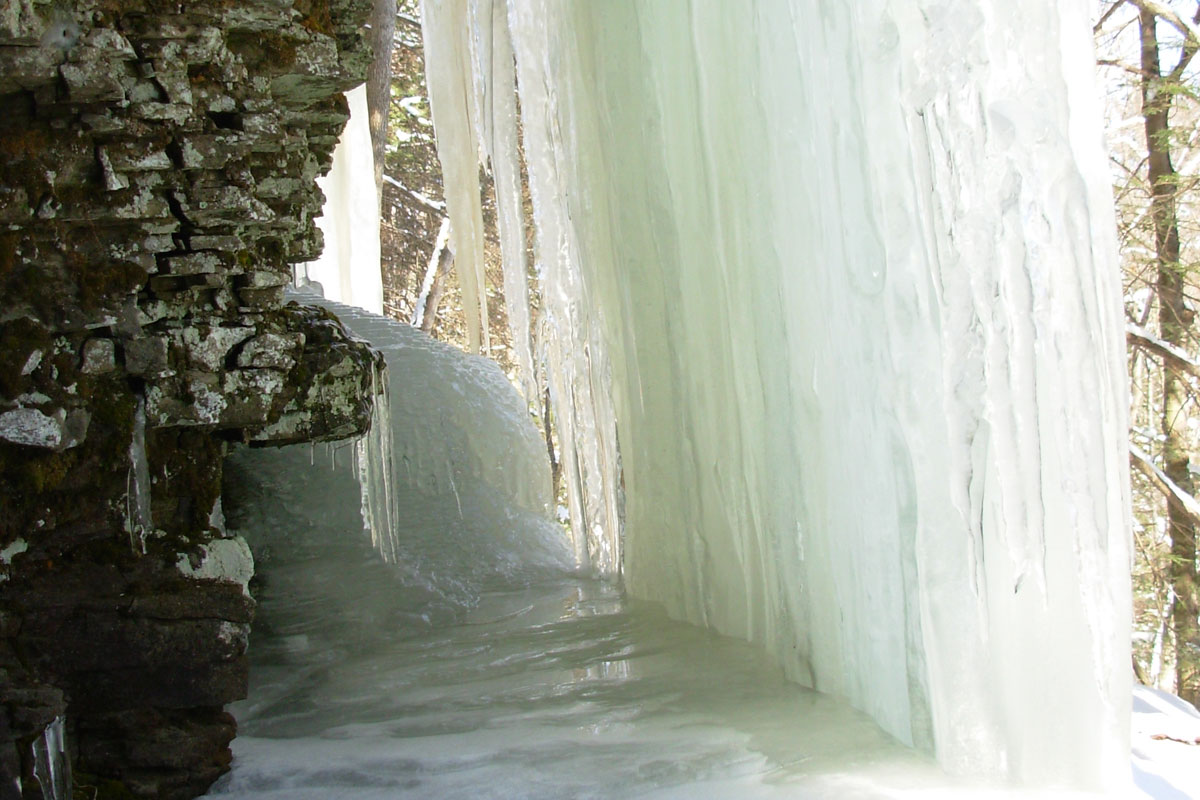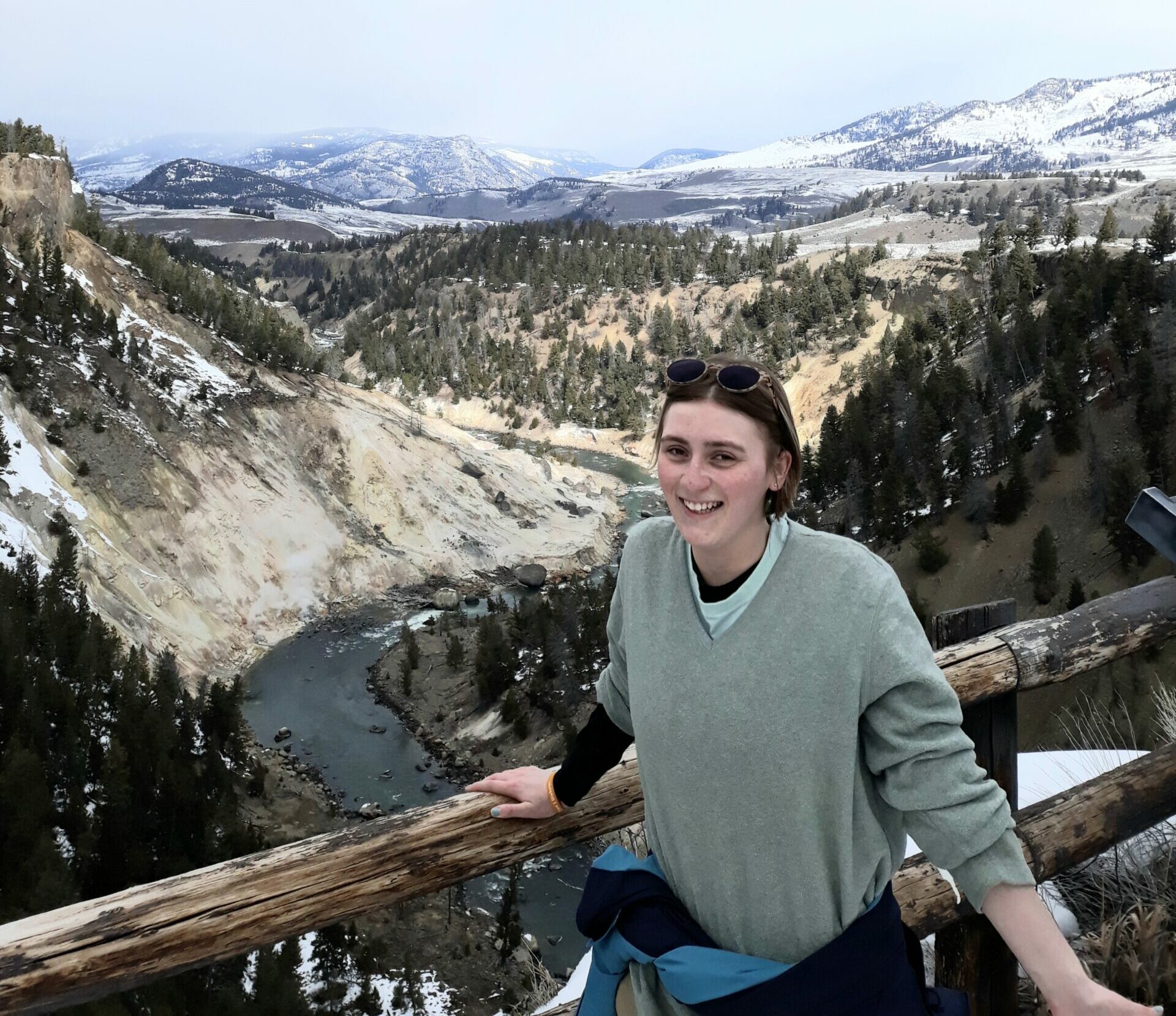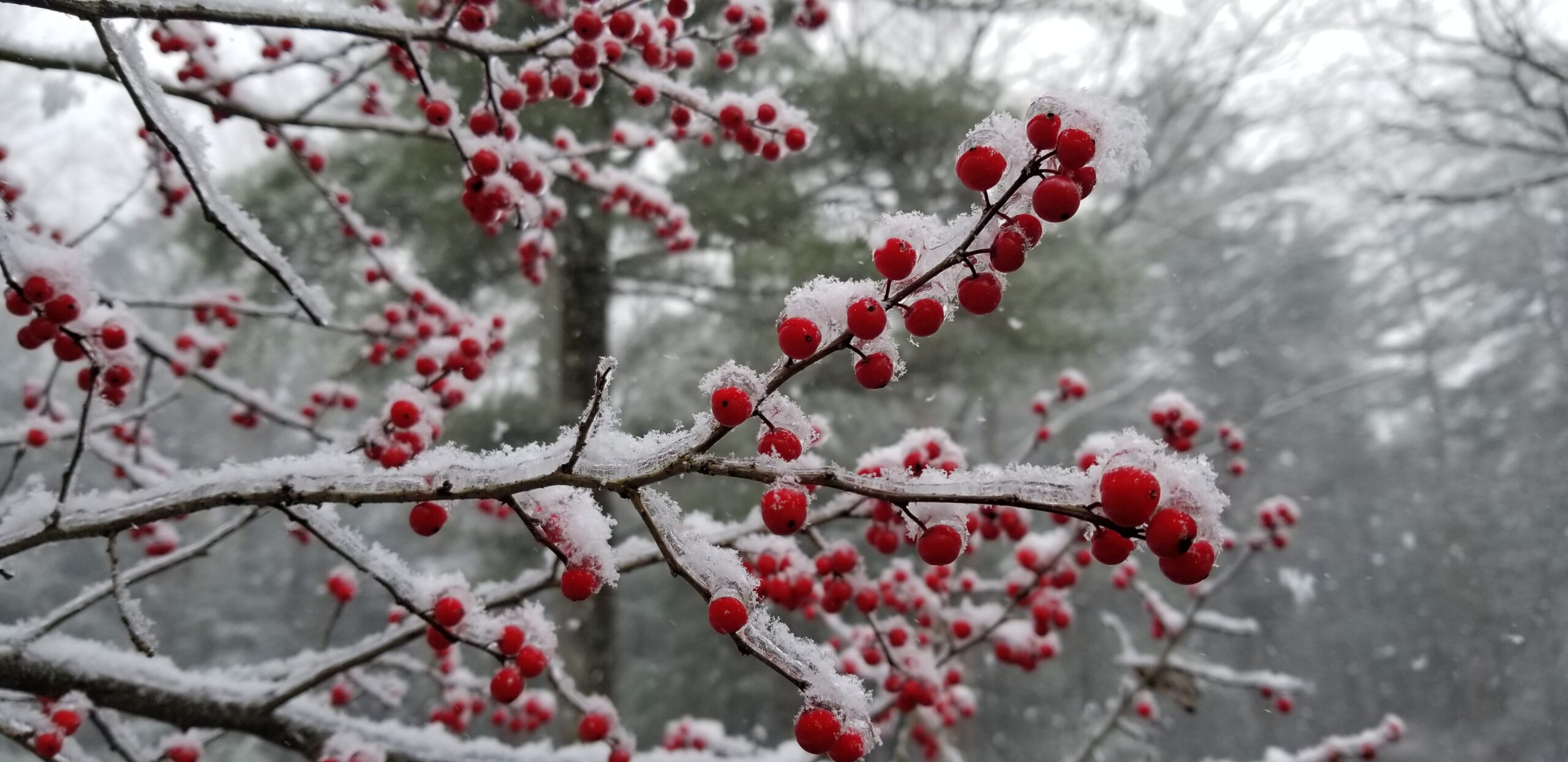News

Seasonal Tales of Regional Trails

By Emily Mansfield, PCCD Communications Coordinator
Winter is a wonderful but often overlooked time to explore the Poconos outdoors. The stillness of the transformed environment makes each journey beautiful and reflective. Against the glistening white snow, splashes of color from evergreen trees, winterberries, and vibrant birds paint vivid photo opportunities.
Along with photo opts, snow on the ground also provides the perfect opportunity to find and identify wildlife tracks along the trail that would otherwise not be visible. If you’re lucky enough to spot the wildlife themselves, it’s also a great time to observe their winter adaptations. Snowshoe hares (Lepus americanus) and ermines (Mustela erminea) camouflage themselves in winter by growing a thicker white coat than their summer brown one to blend into their surroundings, hiding from predators and their own prey. You may even spot frozen frogs poking out from underneath the leaf litter! Wood frogs, gray tree frogs, and northern spring peepers can survive freezing temperatures by regulating their glucose levels so that ice crystals can form around their cells and organs but not inside cells, which would dehydrate and burst. As always, please observe wildlife from a distance and do not disturb or try to touch them!

A winterberry shrub dusted with snow
To see some of these winter gems yourself, consider taking a hike. Many trails are open to the public year-round. Here’s a few of our favorite winter wonderland spots managed by some of our Pike/Wayne Conservation Partners: all 6 trails at the Pocono Environmental Education Center (PEEC), Lacawac Sanctuary’s 9 miles of trails, Delaware Highlands Conservancy’s Van Scott Nature Reserve, the many National Park Service trails of the Upper Delaware Scenic and Recreational River and Delaware Water Gap National Recreation Area, and the PA Department of Conservation and Natural Resources (DCNR) state park and forest trails.
With the joys of winter hiking come a few extra precautions. When tree blazes, color-coded paint splotches on trees lining each trail, are covered with snow, it may be difficult to make out the intended path. Carry a map with you of the site you’re exploring in case you can’t make out the trail markers. Your shoes should have good traction to hold a firm grip on icy surfaces and avoid slipping. And of course, bundle up in warm clothes and ensure that your outer layers are waterproof. Safety first!
We hope you venture out this season and get to experience our unique natural resources in a new light!
